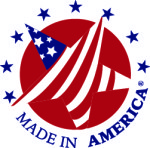5 things to consider when Reshoring – Cost Increases
Do you have systems and measurements in place to monitor your manufacturing cost components?
Costs in offshore locations have dramatically increased over the last five years. In an earlier Blog, “5 things to consider when Reshoring”, we identified cost increases as critical to impacting your manufacturing location decisions. In today’s blog we look at three cost areas – labor, energy and materials – as examples of how to review and monitor your manufacturing choices.
Labor
Chinese labor costs are five times higher than in 2000 in some locations, and continue to rise at an annual rate of 15-20%. Even with these large percentage increases, Chinese labor rates remain low when directly compared to US labor rates. As the wage gap narrows the emphasis shifts to the amount of labor per product and worker productivity. Labor may account for only 20-30% of the total product cost and as the gap continues to decrease net labor savings quickly evaporate. Add to this the steady increase in US worker productivity levels and the labor advantage can become very small.
Labor costs are not the whole story in reshoring. GE found redesigning the product with a joint product development and manufacturing team provided even larger labor savings and automation opportunities. Plus, States are starting to offer tax incentives and other assistance to attract manufacturing, further offsetting labor cost differences. We suggest you evaluate other low-cost countries only when there is a high labor content to production.
Energy
Oil prices are at least three times what they were five years ago. Increasing oil prices put pressure on manufacturing and transportation costs for ocean-going cargo vessel delivering product to the US, transport from factory locations to docks and from docks to warehouses. As energy costs continue to increase we suggest the unique view of product value concentration – the relative product value to the weight of product. This measure provides another way to view your transport costs and determine a tipping point.
On the bright side of energy for reshoring potential is the natural gas boom. With new technologies, such as fracking, the US is enjoying low natural gas prices along with an abundant supply. US manufacturing locations can create real energy savings when compared with offshore locations.
Materials
It may come as a surprise to many companies that the supply base has disappeared from the US and will have to be rebuilt to support domestic manufacturing. Your raw materials supply base is likely to now be clustered around your offshore manufacturing sites. When considering reshoring, the availability of suppliers and tier 2 and 3 manufacturers near your proposed US facility is a critical component of your costs. This is an often-overlooked cost that may drive up the price of your raw materials and will certainly add to the complexity of the supply processes.
Summary
These are just a few cost examples. No one factor can be considered in isolation. Determining your costs and a tipping point where alternate manufacturing locations may be more cost effective is the first step in considering reshoring.
Originally published on Blue Silk Consulting website on April 15, 2013
Mr. Page is a Vice President at Blue Silk Consulting. He is well versed in the Asia Pacific region and OEM, Alliances and Partnership business development. His uncommonly broad and deep knowledge in business and technology plus wide experience enables him to see and communicate joint value, craft exclusive market opportunities, execute intricate projects and deliver tangible results. His consulting style provides the basis for negotiating profitable contracts, executing marketing-making initiatives, delivering high value projects and nurturing enduring relationships. His skills were gained and honed while traveling the world to work in and with organizations ranging from start-ups to the largest international corporations. Prior to BSC, he was the WW Software OEM Manager for the Asia Pacific region at HP, Director of Application and Integration Services at Answerthink, Director of America’s Consulting Services at Viasoft and Director of Redevelopment Services at James Martin & Co.
Mr. Page earned a BS in Business Data Processing at Weber State University, and completed 1 year of MBA studies at Utah State University. He resides in Scottsdale, AZ.





